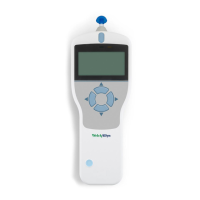Welch Allyn MicroTymp® 4 Tympanometer
User Manual
DIR 80024157 Ver A Page 2
CONTRAINDICATIONS
Ear canal examination with an illuminated otoscope is an essential prerequisite to successful
middle-ear testing. Make sure that the canal is free of any obstruction. If the canal is completely
plugged at the entrance or if fluid is running from the ear canal, tympanometry should not be
attempted until the condition is cleared. Testing should not be performed on patients with
conditions listed below without a medical doctor’s approval.
Recent stapedectomy or other middle ear surgery
Discharging ear
Acute external auditory canal trauma
Discomfort (e.g. severe otitis externa)
Presence of tinnitus, hyperacusis or other sensitivity to loud sounds may contraindicate
testing when high intensity stimuli are used
DESCRIPTION AND OPERATING PRINCIPLES
The Welch Allyn MicroTymp 4 is clinical aural acoustic impedance/admittance instrument (Type
2). The main components of the instrument consist of a hand held unit with an LCD and a probe
assembly and a cradle. A printer, eartips and test cavity are included with the system.
The probe contains one microphone, two receivers and an air channel. One of the receivers is
used for probe tone signal. The second receiver is used for the acoustic reflex stimulus signal.
The microphone measures the response. The air channel is connected to the pump system which
makes it possible to supply the eardrum with air pressure
ADMITTANCE MEASUREMENT
The MicroTymp 4 measures the admittance of the tympanic membrane and middle ear by playing
a continuous 226Hz tone into the ear canal at a level calibrated to give 85dB SPL into a 2ml cavity.
The sound level this produces in the ear canal is measured using a microphone and the
admittance calculated from the result. In line with normal audiometric practice admittance is
displayed as an equivalent volume of air in ml.
TYMPANOGRAM
To record the tympanogram the admittance is measured while the air pressure in the ear canal
is varied from +200daPa to -400daPa by means of a small pump. The admittance peaks when the
air pressure is the same on both sides of the tympanic membrane. The changing admittance with
pressure is displayed as a graph.
ACOUSTIC REFLEX MEASUREMENT
Using the same principle, it is also possible to establish whether an acoustic reflex is present. In
this case, the 226Hz tone is used to measure the admittance of the ear, while a short tone at a

